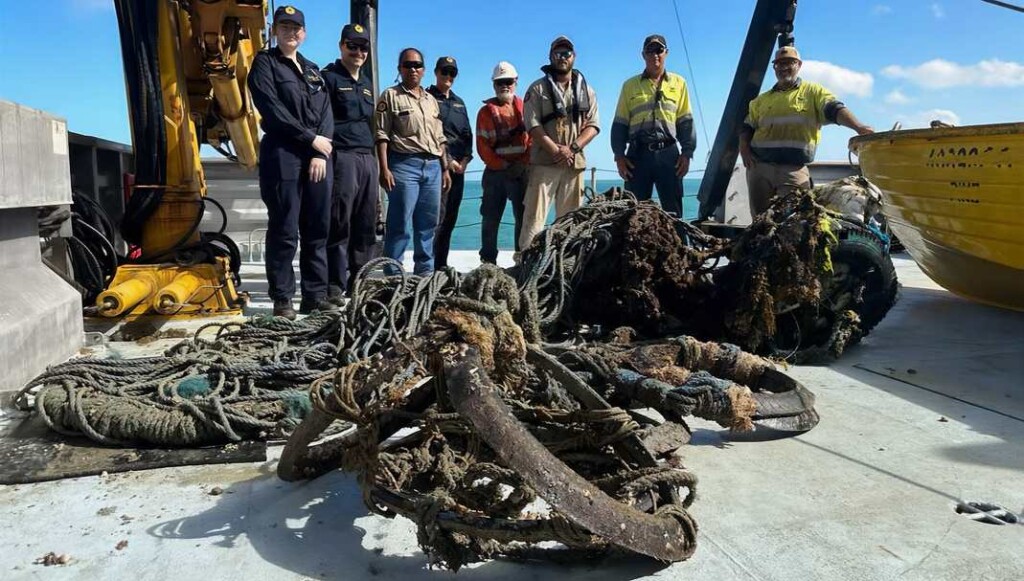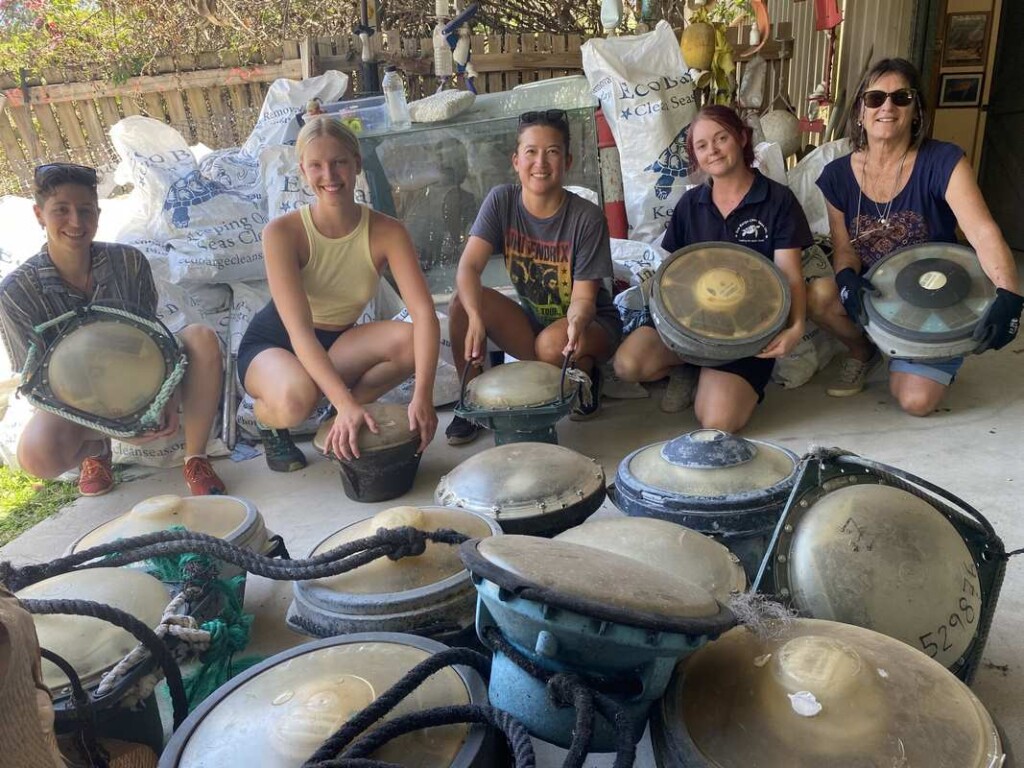Washed up Hi-Tech Tracker Buoys Brilliantly Redeployed to Protect Turtles from ‘Ghost Nets’

Hi-tech GPS-tracking buoys washing up on Australian beaches were a strange find during a litter clean-up for the non-profit Tangaroa Blue.
On a normal day of operations for the marine debris prevention group, large numbers of these buoys were discovered on Cape York coast near Australia’s northeastern tip manufactured in Spain by a company called Satlink.
Rather than taking them to the dump and putting them in the e-waste dumpster, Tangaroa Blue founder Heidi Tait has secured permission from the Spanish company to put them to use tracking ‘ghost nets’.
These abandoned fishing nets drift unknowingly through ocean waters snaring turtles and other sea life. They’re typically left behind by fishermen after being snagged on a reef or rock outcrop, or when a weather event moves them from where the fishermen left them.
In either case, they’re deadly, multi-tonne pieces of marine debris that need large fishing vessels with hydraulic equipment to haul them in. Even if they are found, many fishing boats lack this expensive machine.
So Tait has gathered together a coalition of Australian mariners, from national park staff, Indigenous rangers, commercial fishermen, and charter boats, and handed out the derelict GPS-tracking buoys with a simple instruction—find a ghost net, hook the buoy to it.
Heidi’s partner, Brett, told Hakai Magazine’s Clare Watson that it really helps the organization clear two hurdles in one jump because trackers are “such a high-tech piece of equipment.” They’re obviously not cheap, and for them to go to a landfill “seemed like such a waste.”
Another day, another #ProjectReCon buoy delivered. This one is going onboard Queensland Parks And Wildlife Service’s Reef Ranger!@SatlinkSL #GlobalGhostGearInitiative #GGGI #CitizenScience #GhostNetWatch #OceanConservation #AMDI pic.twitter.com/MBc6TDPsrE
— Tangaroa Blue (@TangaroaBlue) February 11, 2024
The result was Project ReCon, a partnership between Satlink, Tangaroa Blue, and around 100 commercial fishing vessels representing 22 international companies. Project ReCon has also gained the support of two other major environmental organizations, The Nature Conservancy and The Pacific Community, as local partners. By the end of December, the project has extended its reach to a total of eight countries.

Tait can find and track the Satlink buoys with enough precision to be able to ask properly equipped boats to go and collect them.
MORE OCEAN CLEAN-UPS: Nonprofit Diverts an Ocean Plastic Tide, Removing 2 Million Pounds of Trash From Waterways
So far, 3 ghost nets have already been removed by Tait and her coalition, including one that weighed over 3 metric tons.
150m+ of thick mooring rope was found snagged up on the reef. It was untangled and secured on a mooring with two #ProjectReCon buoys attached as we waited for the Cyclone to pass.
Now the winds have settled, it was recovered and removed from the Great Barrier Reef! @SatlinkSL pic.twitter.com/yiye49rIVp— Tangaroa Blue (@TangaroaBlue) January 17, 2024
In another instance, a 150-foot-long mooring rope that had been tangled up in a reef was retrieved—after being tagged with one of the Satlink buoys.
MORE STORIES LIKE THIS: Massachusetts Innovators Aim to Turn Ocean Plastic into Fuel–Right Onboard the Ship
The story is a reminder that in all things, but especially beachcombing, one man’s trash, is another man’s treasure.
SHARE This Great Reuse Case Cleaning Australia’s Oceans…
>read more at © GoodNews
Views: 1